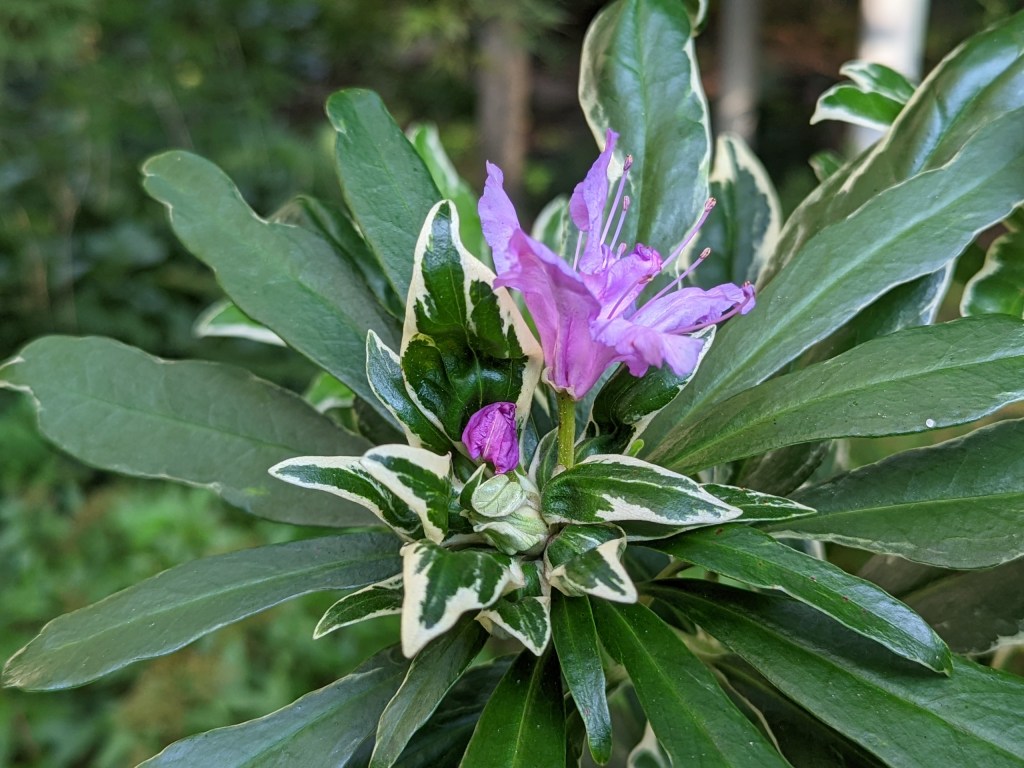Why would this pendulous branched Chinese dogwood (Cornus kousa ‘Elizabeth Lustgarten’, below) flower in the heat of late summer? In fact, early September is the start of meteorological autumn (and the gardener’s autumn, at least mine), but there’s no debating that our recent weeks have been very summer-like with temperatures in the upper nineties. Happily, our sustained drought ended with several inches of rain over the weekend, and the forecasted temperatures look much more autumn-like.

The few flowers of the dogwood are not terribly surprising. Every year there’s something that flowers out of season. A year ago, it was the ‘Silver Edge’ rhododendron (below) just beneath the kitchen window. One branch flowered while the rest held off to flower when they’re supposed to, in spring. When it’s hot, the blooms aren’t happy, and the few flowers on ‘Elizabeth Lustgarten’ are hardy ornamental.

Despite its mostly shaded location, ‘Sun King’ aralia (Aralia cordata ‘Sun King’, below) is a magnet for pollinators. Oddly, these are all small bees and wasps and not much larger carpenter and bumblebees that are abundant on flowers in the sunnier rear garden. The unusual flower is typical of the aralia family (Araliaceae) and nearly identical to the late autumn flowers of the related ‘Spider’s Web’ fatsia (Fatsia japonica ‘Spider’s Web’) that flowers so late in autumn that there are rarely any pollinators flying around in the cold.

While ‘Spider’s Web’ has proven to be cold hardy enough to survive temperatures below ten degrees (Fahrenheit) without any damage, it is clearly out of place this far north when it flowers at a time when there’s no insect around to pollinate it. We will not be making babies.
